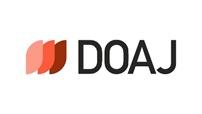Abstract
Temperature and weather are all around us, quite literally. Furthermore, temperature and weather not only permeate our atmosphere, constantly affecting our visceral states of warmth and coldness, but they metaphorically permeate our language. People, products, and ideas can all be “hot” or “cold.” Given this ubiquity, it is perhaps surprising that relatively little research has systematically examined the influence of temperature on choice and judgment. Temperature-related words such as “hot” and “cold” are often used to describe impulsive and calculated behaviors, respectively. These metaphoric connotations of thermal concepts raise the question as to whether temperature, psychological states and decision making are related to each other, and if so, how. The current research examines these questions and finds support for a relationship. Across one field study and one laboratory experiment, I demonstrate that both hot ambient room temperature (Spa) and hot temperature primes (words) trigger decision outcomes in line with the metaphoric association between hot temperature and impulsivity. In the field study, participants were recruited in hot (40-50 degrees Celsius) and cold (10 degrees Celsius) rooms at a spa. Participants were simply asked to indicate their willingness-to-pay (WTP) for three product categories (travel package, birthday dinner, and cell phone). The results showed that participants in the hot room in comparison to those in the cold room were willing to pay more for the same products. Next, I tested if our results would go beyond ambient temperature and would hold if I were to prime temperature concepts by using a different priming method (i.e., subliminal vs. supraliminal). In line with the previous findings in the spa, participants in the hot priming condition were more likely to choose the wrong answer for the bat and baseball question than those in the cold priming condition. In addition, product type (e.g., pleasure vs. necessity) can moderate the effect of hot temperature on impulsivity. Mood and arousal did not mediate participants` responses. My findings seem to suggest that the effects of temperature on decision outcomes can be attributed to metaphoric associations rather than incidental mood or arousal. The current research applies a novel perspective in understanding the relationship between temperature and judgment and decision making. Also, the results have practical implications for packaging, advertising, merchandising, and pricing of goods and services, as well as for public policy and awareness. One of the most natural implications of my findings would be that retailers would be better off carrying more impulse purchase items on hot days. Furthermore, point-of-purchase promotions encouraging impulse purchase is more likely to be effective in retail environments with higher temperature than with lower temperature. In addition, advertisements and product packages evoking hot temperature associations (e.g., beach, sunshine, summer) might lead consumers to pay higher price for the advertised product than those with cold temperature associations.
Recommended Citation
Ahn, Hee Kyung
(2012)
"The Effects of Hot Temperature on Impulsive Behaviors,"
Asia Marketing Journal: Vol. 14
:
Iss.
3
, Article 3.
Available at: https://doi.org/10.53728/2765-6500.1488
Creative Commons License

This work is licensed under a Creative Commons Attribution 4.0 License.





